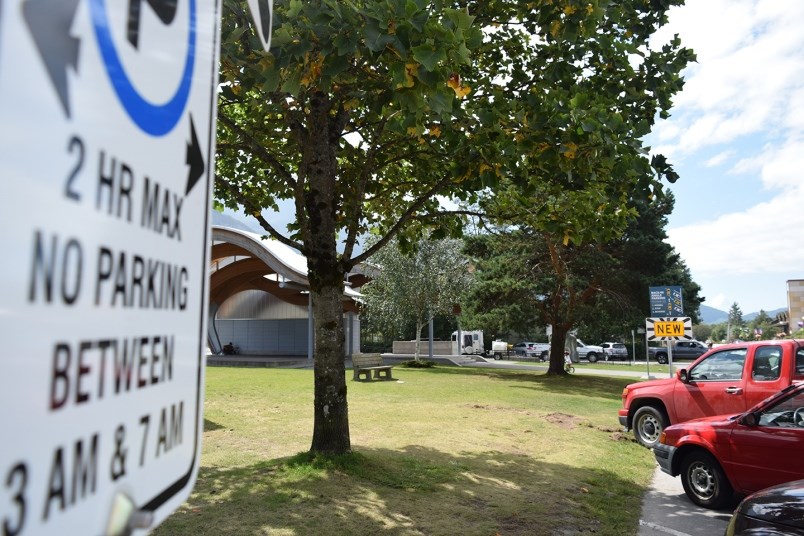Summer is about to bring more tourists to town and with that comes an annual problem that only seems to get worse – finding parking downtown.
But if you think scoring a spot is difficult now, wait until the downtown core is built up with more apartments and stores.
It’s a problem that any growing community has and right now, compared to others, it’s not that bad. Just drive a couple blocks from Cleveland Avenue and you’re bound to find a place to park.
But, still, it’s taken some adjustment, especially from people who have lived here a long time. There’s no more guarantee of being able to pull up in front of a store and walk right in.
And the problem is bound to get worse as Squamish’s population grows and more visitors are attracted to town.
On a local Facebook group, the question recently came up of whether restaurant patios should be allowed to take up prime parking. This is a controversial topic and one that isn’t solved by banning outdoor patios, especially when they only take up a couple spots but accommodate a dozen or so patrons, which is a perk for Squamish’s economy.
In the post, Coun. Susan Chapelle, a long-time bike transportation advocate, suggests making it easier for residents to bike downtown. This includes easy places to park and lock their bikes. She also suggests centralized parking and better transportation.
In a column in The Chief earlier this year, Mayor Patricia Heintzman had a creative idea that she suggests would solve two problems with one stone – parking and flood protection.
She says the large District-owned lot at Xwu’nekw Park on the Blind Channel between Victoria and Main streets will need to be raised to about four to five metres geodetic to mitigate flooding (it’s currently at about 2.8 metres) along the dike alignment, and then the entire block filled.
This combined would likely cost about $4 million-plus, she says, an investment that will someday have to be made. Instead of filling the lot, Heintzman suggest building a 250-plus stall parking structure with the park on top of it at the same height as the dike. The cost, she roughly estimates, would not be much more at $4.5 million to $5 million.
Last year, 250 stalls in the downtown core were designated as two-hour parking, and longer-term parking on certain side streets and in gravel parking lots was added. Although this helps keep the cars moving, allowing more people to shop and eat downtown, it doesn’t solve the problem.
Whatever the answer is, something needs to be done before development picks up even more.




